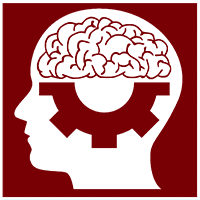Modeling Human Cognition & Learning
Overview
How do we make intelligent inferences about objects, events, and relations in the world from our sensory input? From infancy to adulthood, how do we learn new concepts and reason about novel situations, from little experience? How can we build a robotic system that embodies this intelligence? This unit explores learning and common-sense reasoning in humans and machines.
Videos
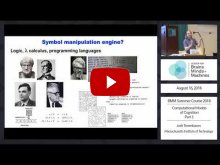
Models of human intelligence have framed the underlying processes as primarily engaged in pattern recognition, prediction, or symbol manipulation. In Part 1, Josh Tenenbaum argues that systems that can reason broadly about the physical and social world must embody models of the world that enable explanation and understanding of what we sense, prediction of future states, problem solving and action planning, and learning of new models with experience. Such systems may be created through an approach that starts with the intelligence of a baby and learns like a child.

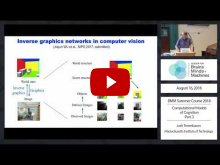
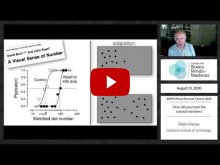
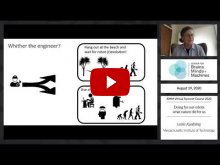
Further Study
Online Resources
Additional information about the speakers’ research and publications can be found at these websites:
- Josh Tenenbaum (MIT)
- Pietro Perona (California Institute of Technology)
- Leslie Kaelbling (MIT)
The unit on Development of Intelligence in the Brains, Minds, and Machines Summer Course published on MIT OpenCourseWare, includes talks by leading researchers in cognitive development that elucidate the cognitive capacities of infants and how they develop through early childhood.
The interactive eBook, Probabilistic Models of Cognition, by Noah Goodman and Josh Tenenbaum, explores the probabilistic approach to cognitive science through models implemented in the WebPPL programming language.
The tutorial by Kevin Smith introduces the WebPPL probabilistic programming language through examples of generative models and inference techniques implemented in this language.
ThreeDWorld (TDW) is a general-purpose virtual world simulation platform to support physical interactions between mobile agents and objects in rich 3D environments, to support modeling and experiments in physical reasoning.
Readings
Battaglia, P. W., Hamrick, J. B., Tenenbaum, J. B. (2013) Simulation as an engine of physical scene understanding, Proceedings of the National Academy of Sciences, 110(45), 18327-18332
Kaelbling, L. (2019) Engineering AI, online essay
Kaelbling, L., Lozano-Perez, T. (2013) Integrated task and motion planning in belief space, International Journal of Robotics Research, 32(9-10), 1194-1227
Kondapaneni, N., Perona, P. (2020) A number sense as an emergent property of the manipulating brain, arXiv arXiv:2012.04132v2
Lake, B. M., Salakhutdinov, R., Tenenbaum, J. B. (2015) Human-level concept learning through probabilistic program induction, Science, 350(6266), 1332-1338
Lake, B. M., Ullman, T. D., Tenenbaum, J. B., Gershman, S. J. (2017) Building machines that learn and think like people, Behavioral and Brain Sciences, 40:e253
Liu, S., Ullman, T. D., Tenenbaum, J. B., Spelke, E. S. (2017) Ten-month-old infants infer the value of goals from the costs of actions, Science, 358, 1038-1041
Rule, J. S., Tenenbaum, J. B., Piantadosi, S. T. (2020) The child as hacker, Trends in Cognitive Sciences, 24(11), 900-915
Silver, T., Allen, K. R., Lew, A. K., Kaelbling, L., Tenenbaum, J. (2020) Few-shot Bayesian imitation learning with logical program policies, arXiv arXiv:1904.06317v2
Teglas, E., Vul, E., Girotto, V., Gonzalez, M., Tenenbaum, J. B., Bonatti, L. L., Pure reasoning in 12-month-old infants as probabilistic inference, Science, 332(6033), 1054-1059
Wu, J., Xue, T., Lim, J. J., Tian, Y., Tenenbaum, J. B., Torralba, A., Freeman, W. T. (2018) 3D interpreter networks for viewer-centered wireframe modeling, International Journal of Computer Vision, 126(9), 1009-1026
Yildirim, I., Belledonne, M., Freiwald, W., Tenenbaum, J. (2020) Efficient inverse graphics in biological face processing, Science Advances, 6, eaax5979

